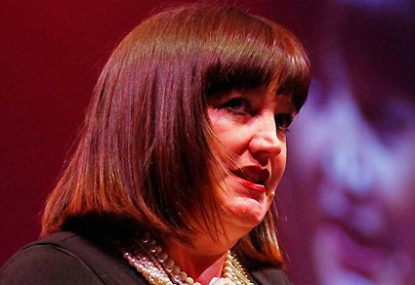Several NRL clubs have in recent years been forced to develop new ownership and management structures to alleviate the financial difficulties that have threatened their survival.
With player salaries and operating costs escalating each year, the NRL must ensure that clubs are well placed to sustain operations without the need for cash injections and bailouts.
While the NRL cannot interfere with the management of clubs it should be capable of enforcing key financial criteria for clubs, including a requirement to retain sufficient levels of cash to provide a buffer against unforeseen events such as legal cases and players/coaches exercising a get-out clause in their contracts.
The NRL should also evaluate the business models of each club to assess their financial dependencies, resilience and the extent to which the fans are able to engage with their club – whether that be through active involvement in club operations or simply having access to the clubs’ social facilities.
While there are many business models available for a football club, the NRL clubs can basically be grouped into three main categories.
1. Member-owned clubs
There are currently nine member-owned NRL clubs: the Canberra Raiders, Canterbury Bulldogs, Cronulla Sharks, North Queensland Cowboys, Parramatta Eels, Penrith Panthers, St George Illawarra Dragons, Sydney Roosters and Wests Tigers.
Traditionally, the football brand name is attached to two distinct legal entities known as the “Football Club” and the “Leagues Club”.
The Football Club is the company/organisation that conducts footballing operations and employs players, coaches and administration staff to sustain a football team. This company holds the NRL licence and generates revenue from sponsorship, merchandise, gate receipts and television broadcast rights.
The Leagues Club is a non-profit organisation (registered club) and its constitution will state that all revenues (generated from entertainment facilities) must be used for the self-preservation and expansion of the club facilities and to provide financial assistance to the associated Football Club.
The Leagues Club usually operates licensed premises such as restaurants and bars, providing a social home for fans and supporters.
Member-owned clubs rely heavily on entertainment revenues, particularly poker machines. As a result, the clubs can be impacted by changing demographics, gambling legislation and the reputation and perceived image of their bars and restaurants.
2. Privately owned clubs
There are currently five privately owned NRL clubs: the Brisbane Broncos, Gold Coast Titans, Melbourne Storm, Newcastle Knights and New Zealand Warriors.
Unlike the member-owned clubs, these clubs must aim to be financially sustainable from footballing revenues alone such as sponsorship, merchandise, corporate sales, gate receipts and the NRL grant.
The Broncos are the only privately owned club to be publicly listed on the Australian Securities Exchange – coincidentally, they are the only club that has consistently made a profit from footballing operations.
The Brisbane Broncos are also the only privately-owned club to have an associated Leagues Club providing sponsorship, facilities to support footballing operations and a social home for fans.
3. Partially privatised clubs
The South Sydney Rabbitohs and Manly Warringah Sea Eagles are the only partially privatised clubs in the NRL.
These clubs are incorporated as private or unlisted public companies limited by shares, and the equity is split between private investors and the original member-owned “District Football Club” where the members and life members belong.
In the case of Manly Warringah, the associated Leagues Club is also a part owner.
The long-term viability of these clubs is often questioned, mainly due to the complex ownership structure and the differing objectives of the various stakeholders.
This power-share arrangement does satisfy two key objectives that are essential to the long-term success of all clubs.
Firstly, these clubs must aim to derive a profit from footballing revenues alone, which promotes efficiency within the club operations.
Secondly, allowing the members to retain some control over the direction of the club ensures the survival of the club’s home, name, colours and icons that are revered by the fans.
Experts have reported that a club’s dependency on a supporting leagues club and generous financial backers is not sustainable in the long term.
Furthermore, when the brand value of a club is strongly linked to the on-field performance of its football team this will often lead to overspending and runaway debt that can only be cleared by a bailout package.
This is one of the reasons why a second Brisbane NRL team may need to be an existing club promoted from the Queensland Cup, with a loyal fan-base and corporate sponsors that will not simply dump the team after a few wooden spoons.
There is no evidence to suggest that one business model is superior to the others, though private ownership appears to be a growing trend.
The NRL should therefore keep an eye on the performance indicators and business objectives of all NRL clubs to ensure that they are financially robust while serving the best interests of their fans and the community.






























































































